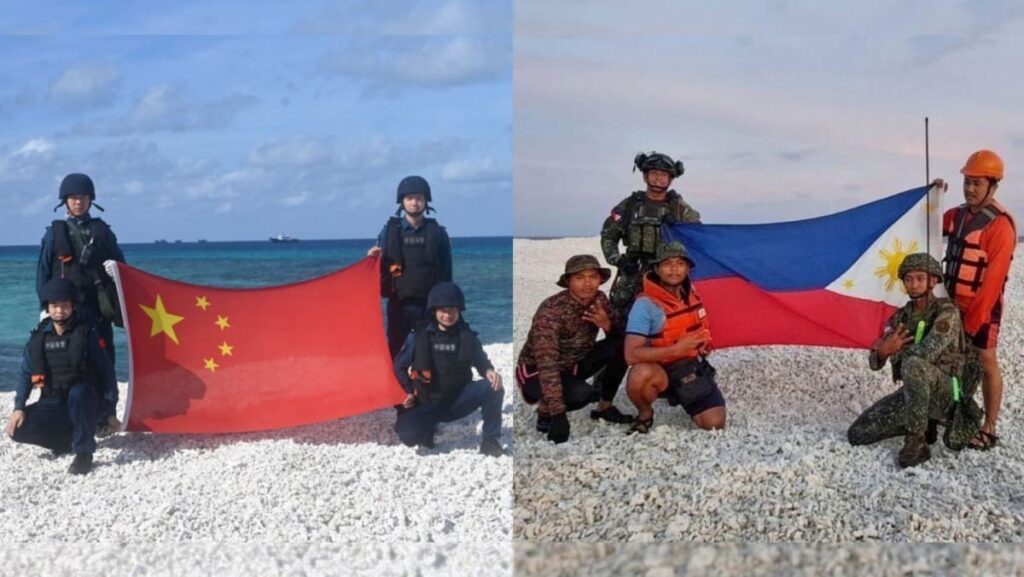SINGAPORE: Recently, China’s national flag was raised by its military personnel on a contested reef in the South China Sea, an event publicized by state media. Analysts view this as a rare public display after years of more discreet actions.
Unlike previous instances where Chinese fishermen, maritime militias, and civilian groups have placed flags on disputed reefs and islands since the 1990s, experts believe that this recent action is a deliberate display of control. It signals China’s intent to respond assertively as tensions rise with the United States.
Moreover, this action conducted on Sandy Cay—a series of uninhabited sandbars close to a Philippine military base in the disputed Spratly Islands—serves to reassure the Chinese public that Beijing is steadfast in its sovereignty claims and to project strength amid increasing external challenges.
On April 25, Chinese state broadcaster CCTV announced that its coast guard had landed on Sandy Cay “as part of maritime control operations to assert Beijing’s sovereignty.”
The broadcaster indicated that the coast guard had “implemented control” over what it calls Tiexian Reef, associated with the Sandy Cay feature. Footage depicted four personnel in dark combat gear holding the Chinese national flag after reaching the reef via an inflatable boat.
On April 28, the Philippine Coast Guard shared a picture of its personnel raising their national flag on the disputed reef, stating that the operation took place early the previous morning—a direct counter to China’s claim of sovereignty.
These events unfold during the largest joint military drills ever conducted by the US and the Philippines in adjacent waters. They also follow a recent trip by US Defense Secretary Pete Hegseth to Asia, where he committed to bolstering defense ties with Manila and “restoring deterrence” in response to what Washington perceives as growing Chinese assertiveness in the region.
“At this moment, it’s largely symbolic. The provocations from both sides are minor and not yet concerning,” commented Adib Zalkapli, Managing Director of Viewfinder Global Affairs and a geopolitical analyst focused on the Indo-Pacific.
However, analysts also interpret this as China solidifying its stance on territorial disputes and responding to external pressures. “It’s a warning to the Philippines against strengthening its defense ties with the US … It signals, look, this is what we are capable of doing in response,” explained Abdul Rahman Yaacob, a research fellow at the Lowy Institute’s Southeast Asia program.
MEASURED ESCALATION
China asserts nearly total control over the South China Sea, a claim that conflicts with those of multiple countries and disregards a 2016 international tribunal ruling that rejected Beijing’s claims to the disputed islands and waters.
Sandy Cay is located near Thitu Island, the largest and most strategically important outpost held by the Philippines in the Spratly Islands, which is part of a region where China, the Philippines, Vietnam, Malaysia, Brunei, and Taiwan all have overlapping territorial claims.


